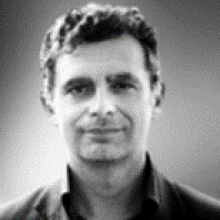
Dr Camata was awarded a Master degree in Civil engineering from the University of Bologna, Italy. He worked at Intelligent Sensing for Innovative Structures (ISIS) in Winnipeg, Canada. He was awarded a PhD in Structural Engineering at the University of Colorado at Boulder, USA, where he was an adjunct professor from 2011 to 2018. His research experience includes experimental and numerical work, and he has more than 100 publications among international journals, books and conferences. He is the founder and managing partner of ASDEA and has broad experience as a structural designer, he has been involved with the design of new structures and assessment of a wide range of existing structures.
Nonlinear Finite Element Analyses (NLFEA) can be used to accurately assess the behavior of complex structural details and systems in cases where standards cannot provide reliable verification or computational models. However, the application of these advanced methods to real problems requires assumptions that can have a decisive impact on the results and has raised several questions on the procedures defined in the codes and on the selection of the appropriate calculation methodologies, in particular:
-NLFEA requires much experience and expertise, which to date is still lacking to make these advanced analyses routine for structural assessment and design,
-There is a need to develop reliable and efficient models and tools to manage and interpret the huge amount of complex input and output data generated by the analyses of actual structures.
This talk presents the software Scientific ToolKit for OpenSees (STKO) , which was developed to provide an advanced interface for NLFEA of real structures, and illustrates some of the new features implemented in the OpenSees for structural and Soil Structure Interaction problems. Several applications and examples will be shown. In addition, MonStr, a revolutionary Digital Twinning technology that uses digital sensors, artificial intelligence, and STKO will be presented. The system creates a digital replica updated in real-time to evaluate the health conditions of the infrastructure and predict future response of the infrastructure by simulating abnormal stress or damage conditions for maintenance, repair, and reinforcement. The artificial intelligence algorithms allow Optimal Sensor Placement (OSP) and model calibration. They also interpret the damage and emit alarm signals that are then checked against the finite element model to assess whether the signal is a false positive.
